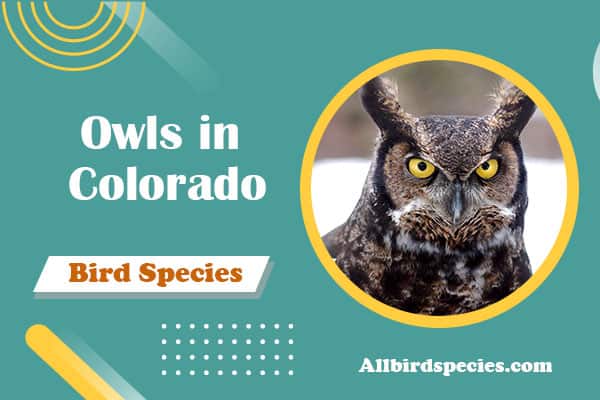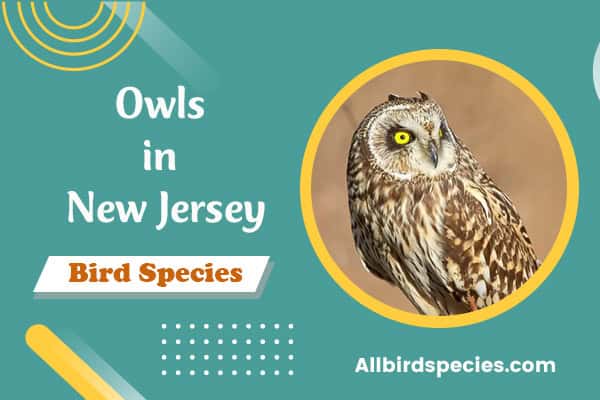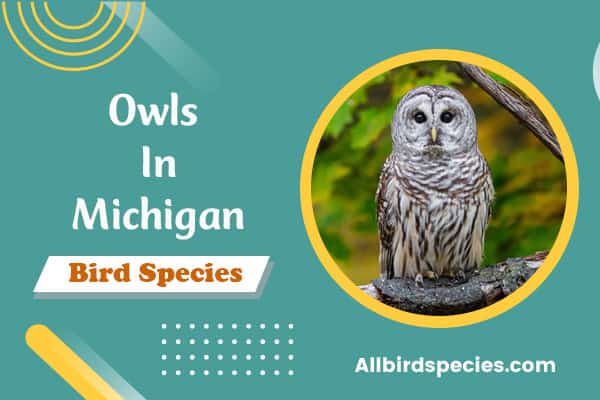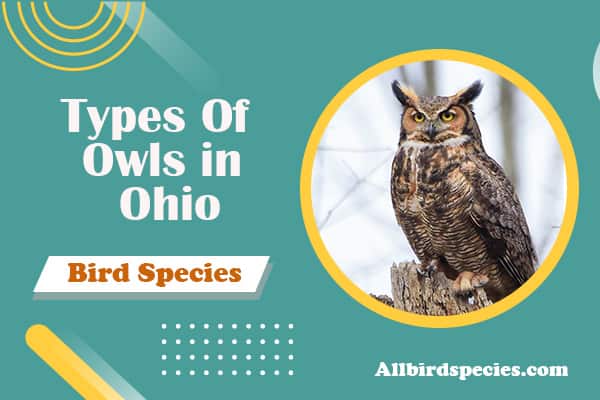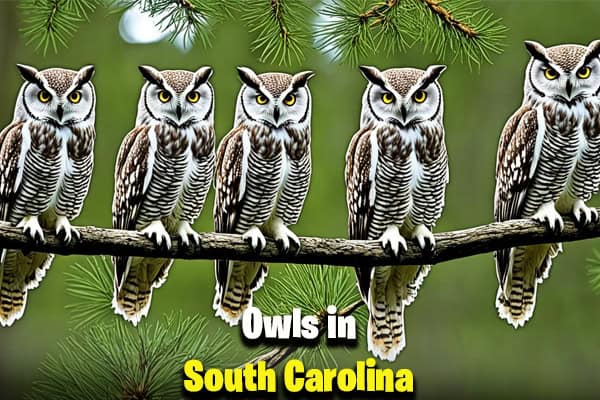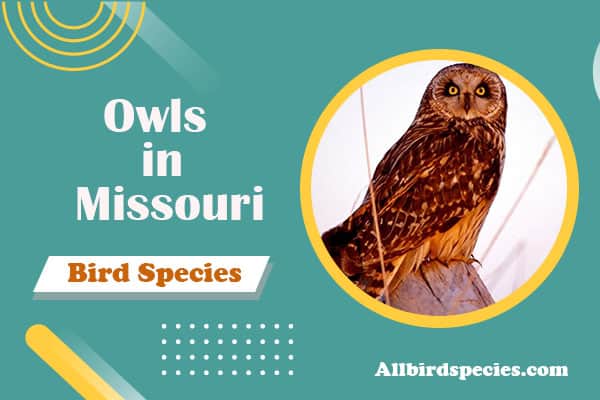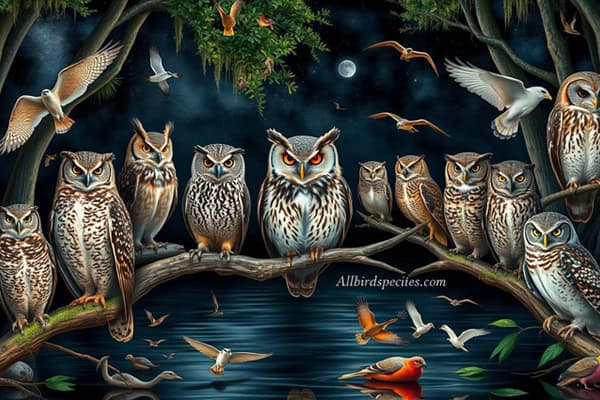11 Types Of Owls in Colorado (Species With Pictures)
Did you know Colorado is home to an impressive owls species? Some of these, like hawk owls and horned owls, are even considered threatened. These majestic birds, with their unique traits, have sparked curiosity and drawn the attention of organizations like the Colorado Avian Research and Rehabilitation Institute, who work hard to protect them. From the iconic Great Horned Owl to the secretive Northern Saw-whet Owl, Colorado’s parks offer a sanctuary for a diverse range of owl species. Come along as we delve into the captivating world of Colorado’s owls and uncover their fascinating secrets.
Here is 11 Different Owls Species That Found in Colorado!
1. Eastern Screech-Owl
Eastern Screech-Owl is one of the fascinating owls species that can be found in Colorado picturesque parks, making it an ideal place to look for owls. With its distinctive calls at night, this small owl captures the attention of both bird enthusiasts and nature lovers who look for owls in their natural habitats.

The Eastern Screech-Owl, scientifically known as Megascops asio, is a true nocturnal predator that hunts for small mammals, birds, and insects under the cover of darkness. Their exceptional camouflage allows them to blend seamlessly into the trees, making them difficult to spot during the daytime.
“The Eastern Screech-Owl is a master of disguise, perfectly adapted to its woodland habitat. Its small size and feather patterns make it virtually invisible, ensuring its survival in the wild.”
Eastern Screech-Owls can be found in various Colorado parks, including Rocky Mountain National Park and Great Sand Dunes National Park. Their preferred habitat consists of wooded areas, where they nest in tree cavities or rely on abandoned woodpecker holes.
The Different Morphs
One interesting feature of the Eastern Screech-Owl is its ability to have two distinct color morphs: gray and red. The gray morph has a cryptic plumage, blending seamlessly with the bark of trees, while the red morph has a reddish-brown hue. The coloration helps them better match their surroundings, providing excellent camouflage against potential predators.
If you’re lucky enough to spot an Eastern Screech-Owl during your visit to a Colorado park, take a moment to appreciate the beauty and adaptability of this remarkable owl species.
2. Great Horned Owl
The Great Horned Owl is a majestic species often found in Colorado. With their iconic ear tufts and piercing yellow eyes, they are a notable sight in the Rocky Mountain National Park.
“The Great Horned Owl is truly a remarkable bird. Its large size, distinctive ear tufts, and intense yellow eyes give it an air of power and wisdom. It is a formidable hunter, capable of taking down prey as large as rabbits and even skunks. Its habitat ranges from dense forests to open grasslands, making it a versatile bird that can thrive in various environments. The Rocky Mountain National Park in Colorado provides an excellent habitat for these magnificent owls, with its diverse landscapes and abundant prey.”
Researchers at the Colorado Avian Research and Rehabilitation Institute have been studying the Great Horned Owl population in the Rocky Mountain National Park for years. Through their research and conservation efforts, they aim to better understand the behavior and habitat needs of these owls, and ultimately contribute to their long-term survival.

The Great Horned Owl has a wide range across North and South America, but it is particularly well-adapted to the rugged terrain of Colorado. Its ability to thrive in diverse ecosystems and adapt to different prey species makes it a formidable predator and an important part of Colorado’s avian ecosystem.
Fun Facts about the Great Horned Owl:
- The Great Horned Owl is known for its distinctive hooting call, which can be heard echoing through the forests at night.
- They have excellent night vision, thanks to their large eyes and specialized retina.
- Great Horned Owls are one of the few bird species that can prey on skunks without being affected by their strong odor.
Conservation Status:
The Great Horned Owl is considered a species of least concern by the International Union for Conservation of Nature (IUCN). However, habitat loss, pollution, and human disturbance can still impact their populations. Efforts by organizations like the Colorado Avian Research and Rehabilitation Institute are crucial for their continued conservation.
Comparison of Owls Species in Colorado Parks
| Owl Species | Habitat | Main Prey |
|---|---|---|
| Great Horned Owl | Rocky Mountain National Park | Rabbits, skunks, small mammals, birds |
| Eastern Screech-Owl | Various Colorado parks | Insects, small mammals, birds |
| American Barn Owl | Colorado parks | Small mammals, birds |
| Barred Owl | Colorado parks | Small mammals, birds, amphibians |
| Short-Eared Owl | Colorado parks | Small mammals, birds |
| Northern Saw-Whet Owl | Colorado parks | Insects, small mammals |
| Burrowing Owl | Various Colorado parks | Insects, small mammals |
| Flammulated Owl | Various regions of Colorado host these unique birds, | Insects |
| Snowy Owl | Various regions of Colorado | Small mammals, birds |
| Long-Eared Owl | Various regions of Colorado | Small mammals, birds |
| Northern Pygmy Owl | Various regions of Colorado | Insects, small mammals |
| Western Screech Owl | Various regions of Colorado | Insects, small mammals |
| Boreal Owl | Various regions of Colorado | Insects, small mammals |
3. American Barn Owl
In Colorado, the American Barn Owl is a captivating species of owl that can be found in various parks throughout the state. With their pale plumage and dark eyes, these owls are easily recognizable and a joy to spot during outdoor adventures.
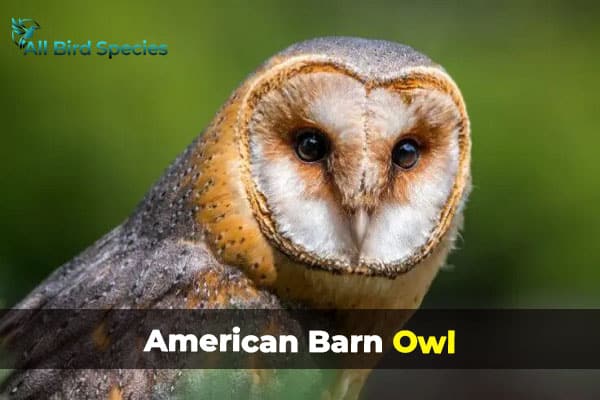
The American Barn Owl, scientifically known as Tyto furcata, is a medium-sized owl that is native to North America. Despite its name, it is not primarily found in barns but can be seen in a diverse range of habitats, including grasslands, agricultural areas, and forests.
This owl is known for its distinctive heart-shaped face and silent flight, which allows it to hunt for small mammals, such as mice and voles, with incredible precision. Its hunting prowess makes it a valuable ally to farmers and gardeners, as it helps keep rodent populations in check.
Colorado, with its varied landscape and abundance of open spaces, provides the American Barn Owl with ample hunting grounds and nesting sites. The state’s parks, including Rocky Mountain National Park and Chatfield State Park, offer suitable habitats for these nocturnal birds of prey.
“The American Barn Owl is a remarkable species that plays a significant role in maintaining the ecological balance of Colorado’s ecosystems,” says Dr. Jennifer Davis, an ornithologist at the Colorado Avian Research and Rehabilitation Institute.
These owls are highly adaptable and have been able to thrive despite habitat loss and human encroachment. However, they do face some challenges, such as competition for nesting sites and the use of toxic rodenticides by humans, which can affect their prey species, including small birds, and indirectly impact their population.
Efforts are underway by organizations like the Colorado Avian Research and Rehabilitation Institute to study and protect these magnificent birds. By conducting research, educating the public, and promoting conservation practices, these organizations are working to ensure a bright future for the American Barn Owl and other owl species in Colorado.
You may want to read Sparrows in Ohio
4. Barred Owl
The Barred Owl is a beautiful owl species that can be found in Colorado parks. With its distinctive hooting sound and unique plumage, the Barred Owl is a treasured sight for bird enthusiasts.

Key Features of the Barred Owl:
- Plumage: The Barred Owl has a large, round head with dark brown eyes. Its plumage mainly consists of horizontal bars of brown and white, providing excellent camouflage amidst the trees.
- Hooting Sound: The Barred Owl is known for its distinctive hooting sound that resembles the phrase, “Who cooks for you? Who cooks for you all?” It is a vocal and territorial bird that uses its hoots to communicate and establish its presence in the forest.
- Size: Adult Barred Owls measure approximately 17-20 inches in length, with a wingspan of 39-43 inches.
- Habitat: Barred Owls prefer dense, mature forests near wetlands or water bodies. They can be found in a variety of Colorado parks, including Rocky Mountain National Park and Great Sand Dunes National Park.
- Behavior: These owls are primarily nocturnal, hunting during the night for small mammals, birds, reptiles, and amphibians. They are known to perch quietly on tree branches or glide silently through the forest in search of their prey.
- Conservation Status: The Barred Owl is not considered threatened or endangered. However, habitat loss and competition with other owl species, such as the Spotted Owl in certain regions, may pose threats to their population in certain areas.
Observing a Barred Owl in its natural habitat can be a captivating experience. Its unique appearance and hooting sound make it a popular sighting among birdwatchers and nature enthusiasts in Colorado parks.
Also Visit Birds With Orange Heads
5. Short-Eared Owl
The Short-Eared Owl is a stunning species of owl that can be found in Colorado. These owls are known for their distinctive facial disk, which aids them in capturing sound and locating prey. Additionally, they have short ear tufts that give them a unique appearance among other owl species.

Short-Eared Owls can be found in various Colorado parks, where they hunt for small mammals like voles and mice. They are most active during dusk and dawn, utilizing their keen hearing and silent flight to sneak up on their prey.
Unlike many other owl species, Short-Eared Owls do not nest in trees. Instead, they prefer to make their nests on the ground, typically in open grasslands or marshes. This nesting behavior makes them vulnerable to disturbance and habitat loss.
Conservation Status
The Short-Eared Owls is considered a species of conservation concern in Colorado. Their population has been declining due to habitat loss and disturbance caused by human activities. Efforts are underway to protect their nesting sites and restore their habitat by collaborating with landowners and implementing conservation measures.
By understanding the unique characteristics and habitat needs of the Short-Eared Owl, we can work towards preserving this beautiful species and ensuring its presence in Colorado parks for generations to come.
| Species | Distinctive Features | Habitat |
|---|---|---|
| Short-Eared Owl | Distinctive facial disk and short ear tufts | Open grasslands and marshes |
| Great Horned Owl | Iconic ear tufts and piercing yellow eyes | Various habitats including forests and urban areas |
| American Barn Owl | Pale plumage and dark eyes | Fields, farmlands, and barns |
6. Northern Saw-Whet Owl
The Northern Saw-whet Owl is a small owl species that can be found in Colorado. With their white eyebrows and unique nesting habits, they are a fascinating species often studied by the Colorado avian research and rehabilitation institute.
The Northern Saw-whet Owl, also known as the Aegolius acadicus, is one of the smallest owl species in North America, measuring around 7 to 8 inches in height. Despite their small size, they have a distinctive appearance with a round head and large, golden eyes.

Colorado avian researchers and rehabilitators are particularly interested in studying the nesting habits of the Northern Saw-whet Owl. These owls typically nest in tree cavities, old woodpecker holes, or even nest boxes, creating a safe and cozy environment for their young. Understanding their nesting preferences and habitat requirements is crucial for conservation efforts and ensuring the long-term survival of this species.
The Northern Saw-whet Owl is primarily a nocturnal hunter, preying on small mammals like mice, voles, and shrews. They have excellent hearing and can detect the slightest sounds made by their prey, allowing them to locate and capture their meals with precision.
Interestingly, the Northern Saw-whet Owl has a unique call that resembles the sound of a saw being sharpened, hence its name. Their calls can often be heard during their breeding season, which typically occurs from late winter to early spring.
“The Northern Saw-whet Owl is a captivating species to study. Their small size and secretive nature make them challenging to observe in the wild. Through our research and rehabilitation efforts, we aim to gain valuable insights into their behavior, ecology, and nesting site preferences.” – Dr. Rebecca Davis, Colorado Avian Researcher
Conservation initiatives, such as the establishment of protected areas and conservation programs, are vital for the Northern Saw-whet Owl’s survival. By preserving their habitats and providing suitable nesting sites, we can ensure that future generations will have the opportunity to witness the beauty of these elusive owls in Colorado’s natural landscapes.
Explore Herons and Egrets in Florida
7. Burrowing Owl
The Burrowing Owl is a charming species that can be found in Colorado. They are known for nesting underground and can be spotted in various Colorado parks.
Key Features of the Burrowing Owl
- Elongated legs and short tail
- Distinctive white eyebrows
- Small size, measuring about 9 to 10 inches in height
- Mottled brown and white plumage

Habitat and Behavior
The Burrowing Owl prefers open grasslands and prairies, where they can find suitable burrows for nesting. They are highly adaptable and can also be found in agricultural fields, golf courses, and vacant lots.
Unlike other owl species, the Burrowing Owl is diurnal, meaning they are active during the day. They are often seen perched on low posts, signs, or mounds of soil near their burrows, scanning the surroundings for prey.
Diet
The Burrowing Owl primarily feeds on small mammals, such as mice, voles, and ground squirrels. They are also known to consume insects and occasionally reptiles and birds.
Conservation Status
The Burrowing Owl faces various threats, including habitat loss due to urbanization, agricultural practices, and changes in land use. They are listed as a species of concern in some parts of their range. Efforts are underway to protect their nesting sites and promote conservation awareness.
| Burrowing Owl | Key Features | Habitat | Diet | Conservation Status |
|---|---|---|---|---|
| Elongated legs and short tail | Open grasslands, prairies, agricultural fields | Small mammals, insects, reptiles, birds | Species of concern |
You might be interested to Discover Blue Bird With A Red or Orange Chest
Other Owl Species in Colorado
Aside from the previously mentioned owl species, Colorado is also home to a diverse range of owls. These include the Flammulated Owl, Snowy Owl, Long-Eared Owl, Northern Pygmy Owl, Western Screech Owl, and Boreal Owl. Each of these owl species offers its own unique characteristics and can be found in different regions of Colorado.
8. Flammulated Owl

The Flammulated Owl is a small species known for its distinct plumage and mesmerizing nocturnal calls. It can be found in montane forests and aspen groves throughout Colorado. The Snowy Owl, on the other hand, is a majestic bird with its white feathers and piercing yellow eyes. It is known to visit Colorado during the winter months.
9. Long-Eared Owl

The Long-Eared Owl can be found in wooded areas and open forests. It is recognized by its long ear tufts, which give it a distinctive appearance. The Northern Pygmy Owl is a small but fierce predator, often found in coniferous forests where it hunts for small mammals and birds.
10. Western Screech Owl
- Scientific name: Megascops kennicottii
- Life span: 6-8 years
- Size: 8-10 inches (20-25 cm)
- Weight: 4.3-8.6 oz (122-244 g)
- Wingspan: 18-24 inches (46-61 cm)
- Status: Least Concern
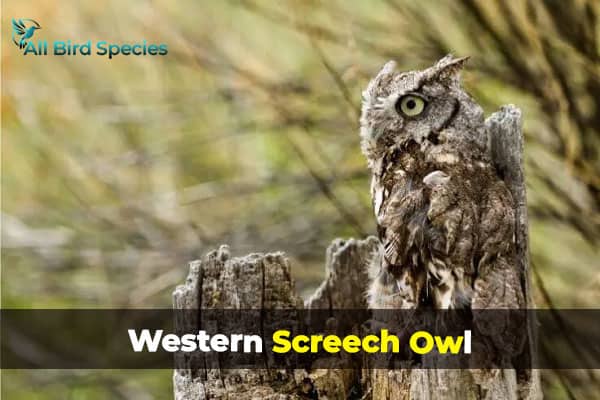
The Western Screech Owl is a small owl found across western North America, from Mexico to Canada. With their ear tufts, yellow eyes, and brown and gray feathers, these owls are captivating.
Despite being the smallest owl in North America, they have a loud call! A fact about Western Screech Owls is that their call sounds like a bouncing ball or a soft whistle.
They nest in tree holes or woodpecker nests and use human-made boxes.
Breeding starts in late winter or early spring, and the female lays 2-4 eggs. The young owls leave the nest after around 30-35 days.
Owls In Colorado, they eat insects, small mammals, birds, and reptiles, including spiders and scorpions. They’ll eat whatever’s available.
Unfortunately, their numbers in Colorado have dropped due to habitat loss and pesticides. Conservation efforts include protecting habitats and setting up nest boxes. They’re also protected by laws.
11. Boreal Owl
Lastly, the Boreal Owl inhabits montane forests and is known for its camouflage plumage and unique vocalizations.
- Scientific name: Aegolius funereus
- Life span: 8-10 years
- Size: 8-10 inches (22-27 cm)
- Weight: 3.5-7.5 oz (100-210 g)
- Wingspan: 20-24 inches (51-61 cm)
- Status: Least Concern
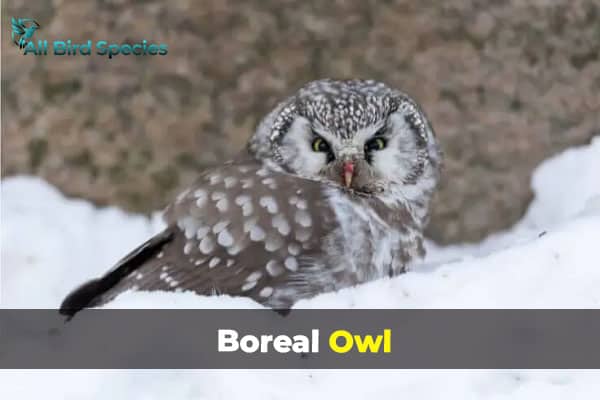
The Boreal Owl, also known as Tengmalm’s Owl, inhabits North American and Eurasian boreal forests. These nocturnal birds have distinctive yellow eyes and a unique facial disk aiding in prey location.
They nest in tree cavities or abandoned woodpecker holes, laying 4-6 eggs and incubating them for about 28 days.
Their diet mainly consists of small rodents, but they also prey on birds, shrews, and insects. They hunt by flying low, listening for prey sounds, then dive to capture them.
In Colorado, habitat loss and fragmentation pose significant threats to Boreal Owls. Logging, wildfires, and climate change contribute to declining mature forest habitats crucial for nesting and foraging.

